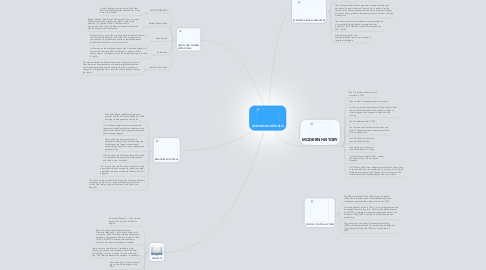DOMINICAN REPUBLIC
by alondra torres

1. RELATIONS WITH THE US
1.1. The United States established diplomatic relations with the Dominican Republic in 1884 following its independence from Spain
1.2. U.S. assistance helps build accountable and transparent institutions that can better serve the needs of the Dominican people and strengthen democratic governance
1.3. The country is an important partner in hemispheric affairs due to its standing in the Caribbean as the largest economy and second-largest country in terms of population and land mass
1.4. U.S. exports to the Dominican Republic include oil, agricultural products, machinery, vehicles, and cotton, yarn, and fabric.
1.5. U.S. imports from the Dominican Republic include optical and medical instruments, jewelry and gold, agricultural products, machinery, tobacco, and knit apparel.
1.6. U.S. firms, mostly manufacturers of apparel, footwear, and light electronics, as well as U.S. energy companies, account for much of the foreign private investment in the Dominican Republic.
2. TRAVEL AND TOURISM ATTRACTIONS
2.1. SANTO DOMINGO
2.1.1. Santo Domingo, the oldest city in the New World, lovingly preserves the jewels of its rich history and culture.
2.2. Eastern National Park
2.2.1. Eastern National Park (Parque Nacional del Este) is a prime habitat for hundreds of species of plants and animals, including 112 species of birds. The reserve also encompasses one of the Caribbean's largest marine parks with an immense coral reef system.
2.3. Playa Dorada
2.3.1. Playa Dorada is one of the most popular beach destinations on the Dominican Republic's north coast. This massive resort complex lies on a picturesque stretch of replenished beach dotted with deck chairs and coconut palms.
2.4. La Romana
2.4.1. La Romana, on the southeast coast of the Dominican Republic, is home to the charming Altos de Chavón, a replica of a 16th century artisans' village and one of the island's best spots to shop for crafts.
2.5. Basilica of Our Lady
2.5.1. The modern Basilica de Nuestra Senora de la Altagracia is one of Latin America's finest examples of modern religious architecture and a leading pilgrimage center in Latin America. Annually, on January 21, a pilgrimage from across the country attends Mass at the church.
3. FUN FACTS
3.1. Dominican Republic – is the second largest country in the Caribbean Region.
3.2. Santo Domingo city ( the capital of the Dominican Republic) – is the oldest colonial city in America. Santo Domingo founded the younger brother of Christopher Columbus, August 5, 1496. In 1990, UNESCO declared, that the historic center of the capital is heritage of mankind.
3.3. Dominicans are very religious. Everywhere in the country, you can see the inscriptions about the God: On machines, in cafes, in shops. You can often see a sign “The God has blessed this business” in the shops.
3.4. Dominican flag – is the only flag in the world with the image of the Bible.
3.5. The abortions are officially banned in the Dominican Republic.
3.6. Cops and the military don’t participate in the elections.
4. MODERN HISTORY
4.1. The U.S invaded the Dominicna Republic in 1916.
4.2. They created a new government and military.
4.3. As the new army was established a high military officer named Rafael Leonidas Trujillo,used his position to obtain weapons and prepared to take over the country.
4.4. The United States left in 1924.
4.5. The first democratic elections took place and Horacio Vázquez became the president of the Dominican Republic.
4.6. In 1930, Trullio took over the country with his military.
4.7. He became one of the most renowned dicatrors in history.
4.8. Trujillo was assasinated in 1961, ending the dicatrorship in the Dominican Republic.
4.9. In 1962 Juan Bosch won the democratic elections but as soon as the year 1963 he was overthrown by a faction of old Trujillo followers and went to exile. They had the full support of the United States which believed Bosch was a communist.
5. POLITICS/ POLITICAL SYSTEM
5.1. The PRD replaced the Party of Dominican Liberation (PLD), whose president, Leonel Fernández Reyna, had introduced important free-market reforms from 1996.
5.2. Since the death of Trujillo in 1961, 3 main political parties have dominated Dominican politics. The Dominican Revolutionary Party (PRD), a moderate social-democratic organization, won elections in May 2000, with Hipolito Mejia assuming the presidency.
5.3. The third party is the Social Christian Reformist Party (PRSC), which presented the 94-year-old Joaquín Balaguer, 7 times president since the 1950s, as its candidate in 2000.
6. ECONOMY/NATURAL RESOURCES
6.1. In the 1980's, the Dominican Republic continued to be the fourth largest producer of sugarcrane.
6.2. The sugar industry influenced all sectors of the economy and epitomized the nation's vulnerability to outside forces.
6.3. The Dominican Republic has long been viewed primarily as an exporter of sugar, coffee, and tobacco, but in recent years the service sector has overtaken agriculture as the economy's largest employer, due to growth in telecommunications, tourism, and free trade zones.
6.4. The country suffers from marked income inequality; the poorest half of the population receives less than one-fifth of GDP, while the richest 10% enjoys nearly 40% of GDP
6.5. High unemployment and underemployment remains an important long-term challenge.

